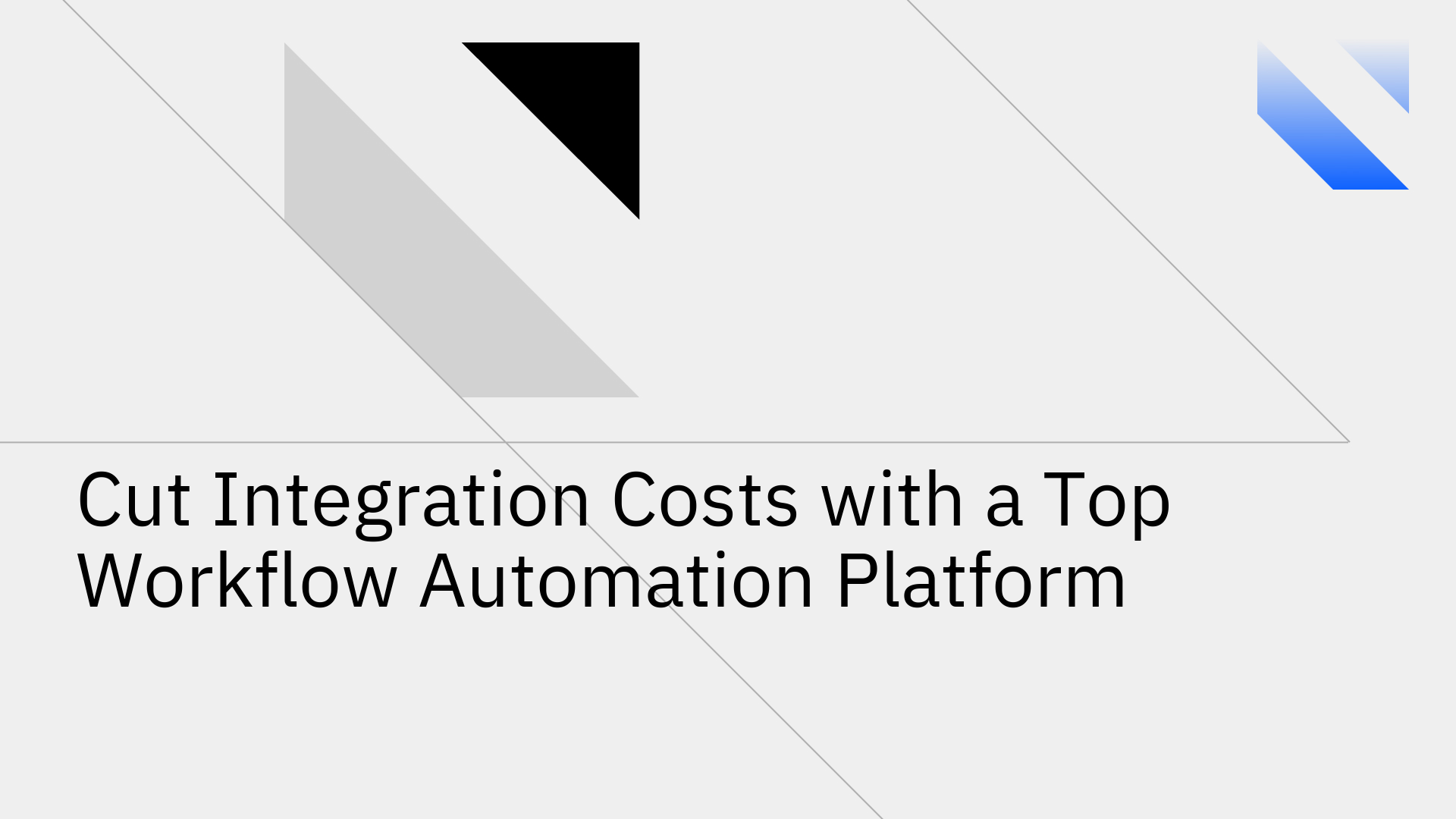For engineering and operations teams, the financial and resource burden of traditional API integrations is a significant inhibitor to agility and growth. Building custom-coded connections between systems is complex and expensive; simple projects can start at $2,000, while complex, multi-system integrations frequently exceed $30,000 in initial development costs alone [1].
A modern workflow automation platform presents a more strategic, cost-effective solution to connect disparate systems and automate critical business processes. This article demonstrates how the right platform can drastically reduce integration overhead, improve operational efficiency, and deliver a strong, measurable return on investment.
The Soaring Costs of Traditional API Integration
The initial development cost of a custom integration is merely the entry point. The true total cost of ownership (TCO) becomes apparent through ongoing maintenance, mandatory updates, and specialized staffing, creating a continuous drain on resources. It's common for organizations to budget between $50,000 and $150,000 annually just for API management, maintenance, and associated partnership fees [2].
Development and Personnel Expenses
The direct and indirect costs associated with building bespoke integration projects are substantial.
- Direct costs include the high salaries of skilled software engineers required to architect, build, and deploy these connections.
- These valuable engineering resources are often diverted from core product development and innovation, creating significant opportunity costs that hinder competitive differentiation.
- Personnel expenses for engineers and the customer success managers who support these integrations can amount to $50,000-$150,000 annually for a single integration [3].
Ongoing Maintenance and Hidden Fees
Custom integrations are not a one-time project; they are a long-term liability requiring continuous operational commitment.
- Maintaining these connections involves a constant cycle of bug fixes, security patching, and adapting to breaking changes in vendor APIs.
- This unforeseen work inevitably leads to scope creep and budget overruns, derailing product roadmaps.
- Without a managed platform, businesses are vulnerable to "silent failures," where data synchronization stops without alerts, leading to data decay, operational chaos, and compromised decision-making.
How a Workflow Automation Platform Slashes Integration Costs
Stacksync is a comprehensive workflow automation platform engineered to eliminate the technical debt and financial strain of traditional integration. Such platforms abstract away the underlying complexity of APIs, infrastructure management, and maintenance, allowing technical teams to focus on creating business value. By leveraging intuitive tools for workflow automation, you can construct robust, automated processes across your entire technology stack.
Eliminate Development with No-Code Setup and Pre-Built Connectors
- Stacksync’s no-code builder empowers business users in functions like RevOps and Finance to configure and manage integrations, while its configuration-as-code capabilities provide the governance and version control that engineering teams require.
- Our extensive library features over 700 pre-built connectors for business-critical applications like Salesforce, NetSuite, HubSpot, and a wide array of databases, enabling setup in minutes, not months.
- This approach can reduce reliance on dedicated engineering resources for integration tasks by up to 90%, freeing them to focus on high-impact, mission-critical initiatives.
Remove Infrastructure and Maintenance Overhead
- Stacksync provides managed, cloud-native infrastructure that scales to millions of executions per minute, obviating the need for companies to provision and manage their own servers, message queues (like Kafka), or databases for integration.
- Key features that eradicate maintenance overhead include Smart API Rate Limiting to avoid hitting quotas, an Issue Management dashboard for rapid debugging and retries, and automated data transformations to ensure schema consistency.
- You gain enterprise workflow automation built for speed, scale, and security without the associated infrastructure burden.
Calculating the Strong ROI of Workflow Automation
A technically superior workflow automation platform moves beyond simple cost-cutting to generate a significant return on investment (ROI). While many organizations struggle to quantify the impact of digital transformation efforts, workflow automation provides clear, quantifiable metrics for success. You can directly measure the ROI of real-time data synchronization through improved data velocity, error reduction, and operational efficiency gains.
Boost Productivity and Efficiency
- Automating manual, repetitive processes like data entry and reconciliation liberates employees to focus on high-value strategic initiatives that drive revenue and growth.
- Companies implementing business process automation (BPA) can achieve a remarkable 240% ROI within months by minimizing data errors and optimizing operational workflows [4].
- Stacksync’s real-time, bi-directional data sync is a core driver of this efficiency, ensuring all teams—from sales and marketing to finance and support—operate with a consistent, authoritative, and up-to-date view of business data.
Achieve Predictable and Transparent Pricing
- Custom integrations are defined by unpredictable and often escalating costs. In contrast, platforms like Stacksync offer transparent, scalable pricing models that enable confident financial planning.
- Stacksync's pricing is based on active syncs and record volume, with no hidden fees for maintenance, support, or infrastructure.
- This consumption-based model ensures you only pay for what you use and can benefit from volume discounts as your data needs grow, providing a clear, predictable cost structure.
Get Started with Stacksync
Stacksync is the ideal solution for businesses looking to eliminate integration costs while building a scalable, resilient operational backbone. Our platform delivers a no-code setup for rapid deployment, fully managed infrastructure for zero overhead, real-time bi-directional sync for data consistency, and powerful workflow automation capabilities. We manage the technical complexity so you can focus on execution.
As Alex Marinov, VP of Technology at Acertus, states, “We’ve been using Stacksync across 4 different projects and can’t imagine working without it.”
While custom API integrations are expensive, brittle, and difficult to maintain, a premier workflow automation platform like Stacksync offers a technically and financially superior alternative. It’s time to move beyond costly integrations and embrace an efficient, scalable, and cost-effective methodology for connecting your business-critical systems.
Ready to see how a modern approach can transform your operations? Book a demo with a solutions architect or start your free 14-day trial today at Stacksync.
